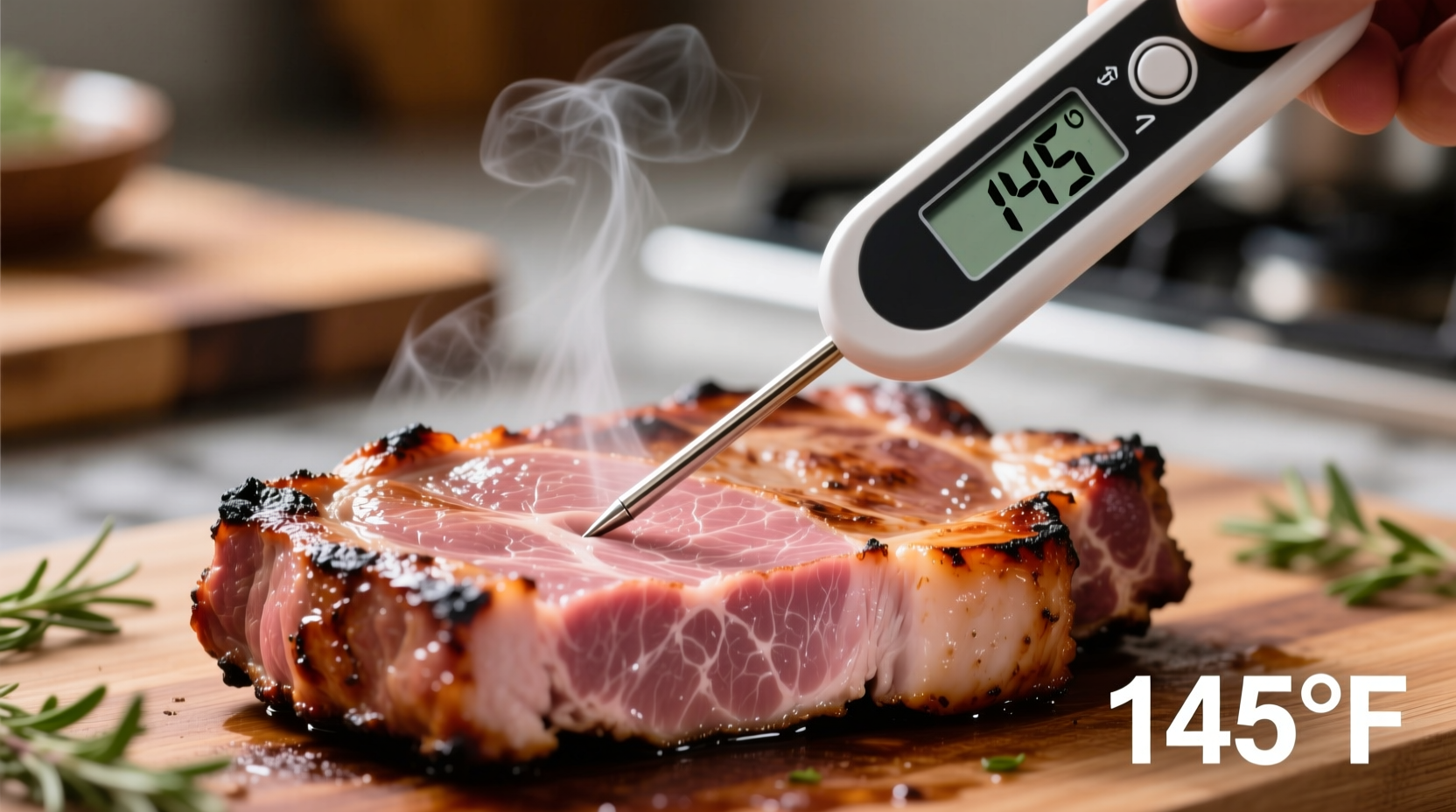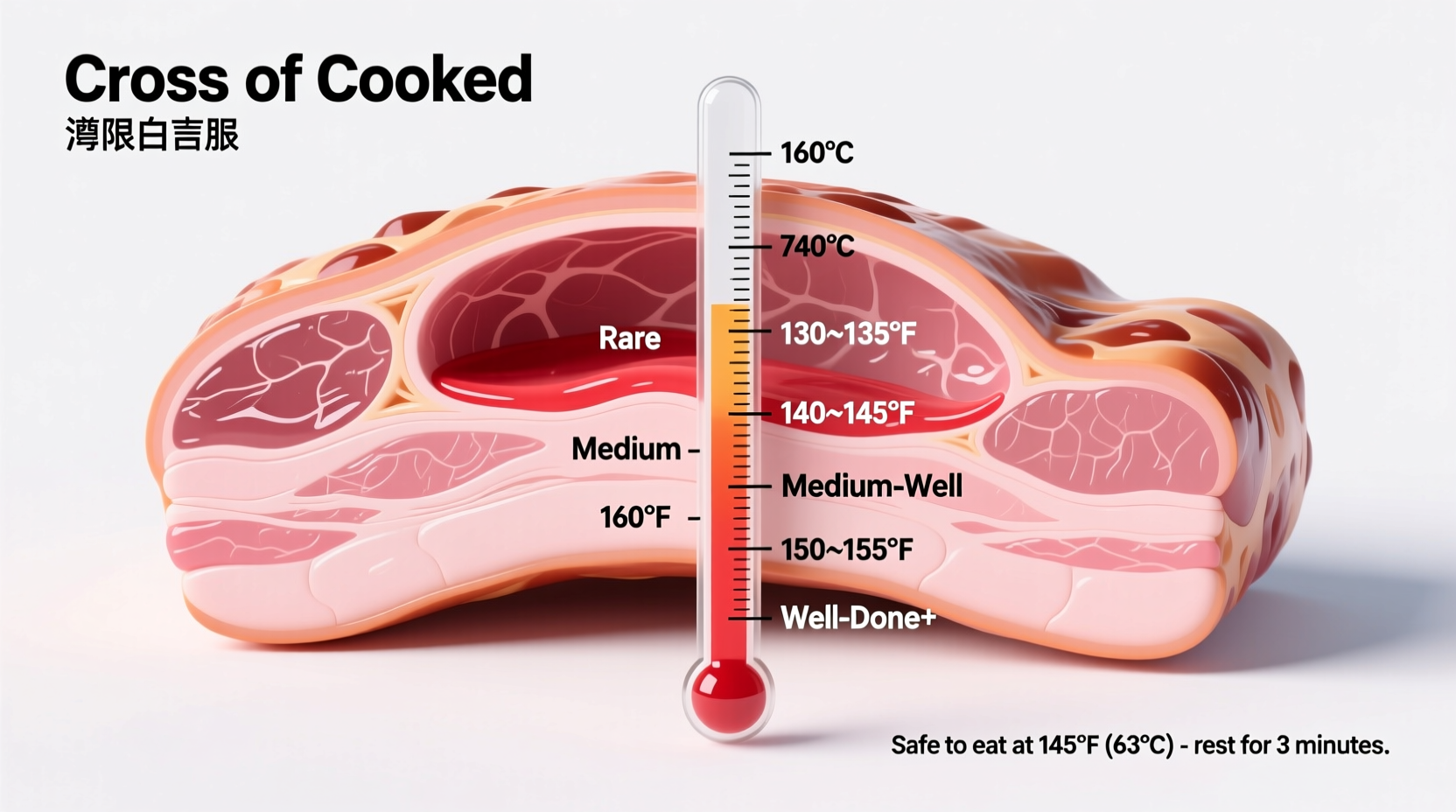For years, many home cooks have been taught to cook pork until it's well-done and completely white. But modern farming practices have virtually eliminated trichinosis concerns, allowing pork to be safely enjoyed at lower temperatures. Understanding the precise temperature requirements for different pork cuts transforms your cooking from guesswork to precision, delivering restaurant-quality results in your own kitchen.
Why Pork Temperature Matters More Than Ever
Proper pork cooking temperature serves two critical purposes: food safety and culinary quality. Undercooked pork can harbor harmful bacteria like Salmonella and Staphylococcus aureus, while overcooked pork becomes dry and tough. The USDA updated its recommendations in 2011 based on extensive research showing that 145°F with a 3-minute rest effectively kills pathogens while preserving moisture.
| Pork Cut | Recommended Temperature | Rest Time | Visual Doneness |
|---|---|---|---|
| Pork chops, roasts, tenderloin | 145°F (63°C) | 3 minutes | Slightly pink center |
| Ground pork | 160°F (71°C) | No rest needed | No pink remaining |
| Pork shoulder (pulled pork) | 195-205°F (90-96°C) | 20+ minutes | Falls apart easily |
| Ham (pre-cooked) | 140°F (60°C) | 3 minutes | Heated through |
How Pork Cooking Temperature Guidelines Have Evolved
The journey to today's pork cooking standards reflects advances in food safety and animal husbandry. In the 1980s, the USDA recommended cooking pork to 160°F (71°C) to eliminate trichinosis concerns. By 2011, with improved farming practices virtually eliminating this parasite, the agency lowered the recommendation to 145°F with a 3-minute rest period. This change, documented in the USDA Food Safety and Inspection Service guidelines, allows pork to retain moisture while remaining safe.
Measuring Pork Temperature Accurately: A Step-by-Step Guide
Using a reliable meat thermometer correctly is essential for perfect pork every time:
- Select the right thermometer: Digital instant-read thermometers provide the most accurate results for home cooks
- Insert properly: Place the probe into the thickest part of the meat, avoiding bone or fat
- Check multiple spots: Especially for larger cuts like roasts or whole tenderloins
- Wait for stabilization: Hold the thermometer in place until the reading stops changing
- Account for carryover cooking: Remember that temperature will rise 5-10°F during resting

Common Pork Temperature Mistakes and How to Avoid Them
Even experienced cooks make these temperature-related errors:
- Guessing doneness by color: Pork can remain slightly pink at safe temperatures due to myoglobin
- Not resting properly: Cutting too soon releases precious juices
- Misplacing the thermometer: Testing near bone gives falsely high readings
- Ignoring different cut requirements: Ground pork needs higher temperature than whole-muscle cuts
Temperature Considerations for Different Cooking Methods
Your cooking technique affects how you should approach pork temperature:
- Grilling: Use indirect heat for thicker cuts to prevent exterior burning before interior reaches proper temperature
- Sous vide: Cook at precise 140-145°F for 1-4 hours depending on thickness, then sear
- Oven roasting: Start at high heat (425°F), then reduce to 325°F to reach target temperature gradually
- Smoking: For pulled pork, continue cooking beyond 145°F to 195-205°F for proper tenderness
Food Safety Practices When Handling Pork
Temperature control extends beyond cooking. Follow these safety guidelines from the FoodSafety.gov:
- Keep raw pork refrigerated below 40°F until ready to cook
- Prevent cross-contamination by using separate cutting boards for raw meat
- Wash hands thoroughly after handling raw pork
- Consume cooked pork within 3-4 days when properly refrigerated
- Reheat leftovers to 165°F (74°C)
Perfect Pork Cooking: Beyond Just Temperature
While temperature is critical, these additional techniques ensure exceptional results:
- Dry brining: Salt pork chops 12-24 hours before cooking for better moisture retention
- Proper searing: Create a flavorful crust at 400°F+ before finishing at lower temperature
- Carryover cooking awareness: Remove pork from heat 5°F below target temperature
- Resting technique: Tent loosely with foil, never seal tightly which causes steaming
When to Cook Pork to Higher Temperatures
While 145°F is the USDA minimum, certain situations warrant higher temperatures:
- When cooking for immunocompromised individuals
- For ground pork products (always 160°F)
- When using older meat that may have higher bacterial load
- For specific recipes requiring fall-apart tenderness like pulled pork











 浙公网安备
33010002000092号
浙公网安备
33010002000092号 浙B2-20120091-4
浙B2-20120091-4